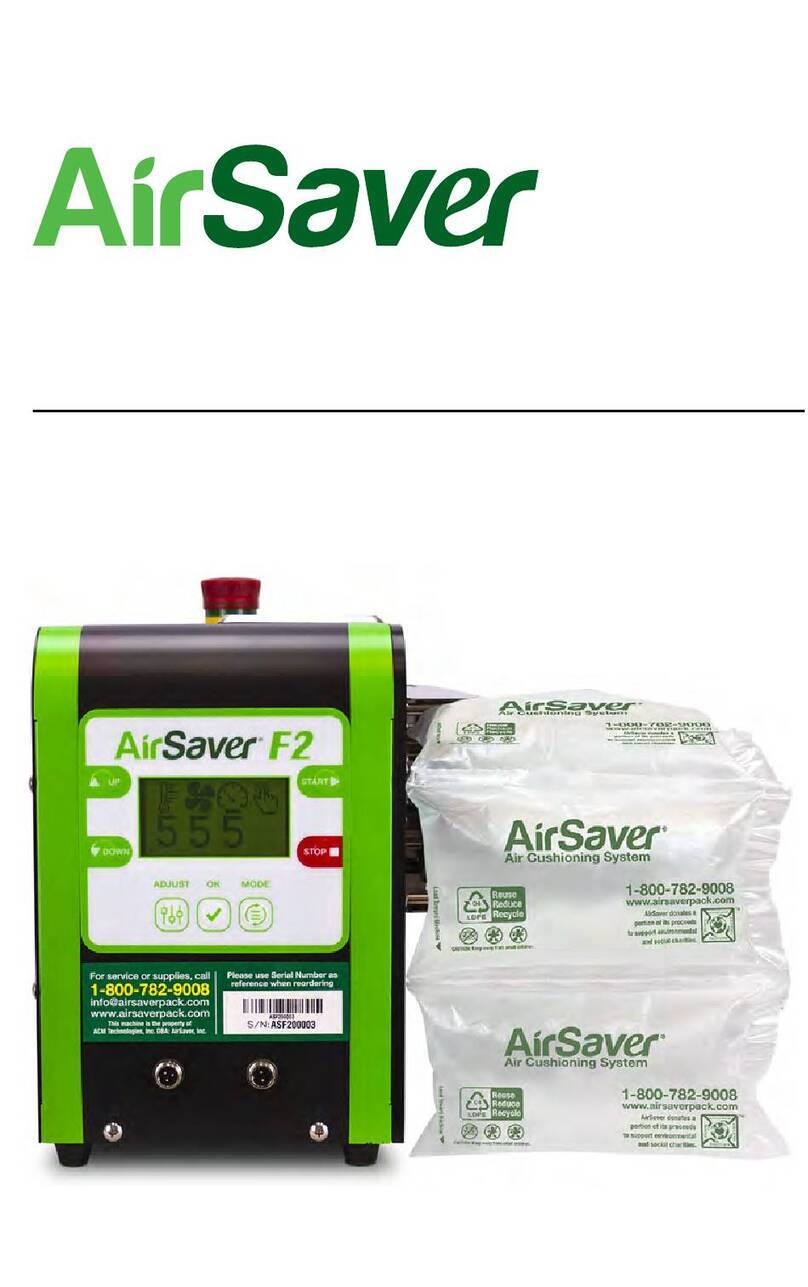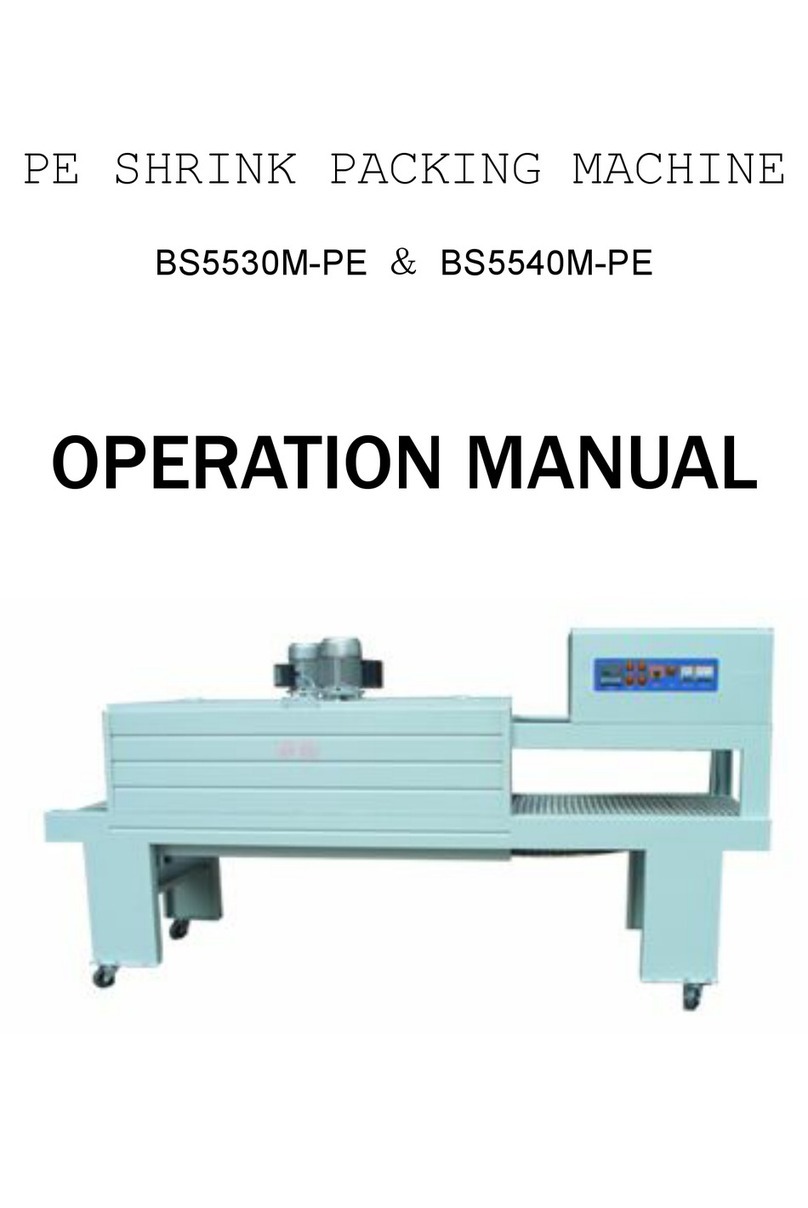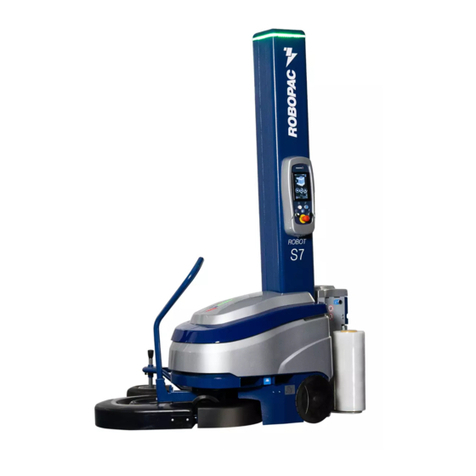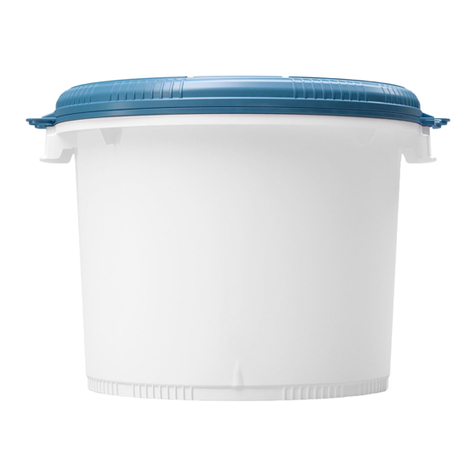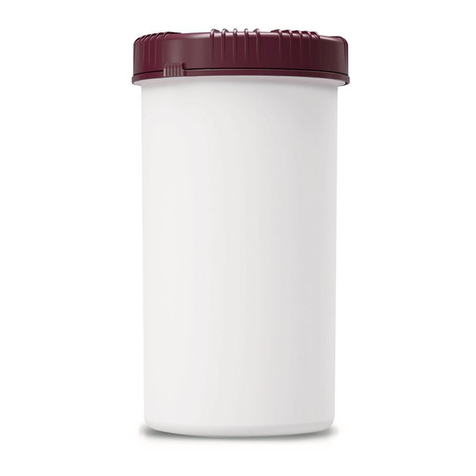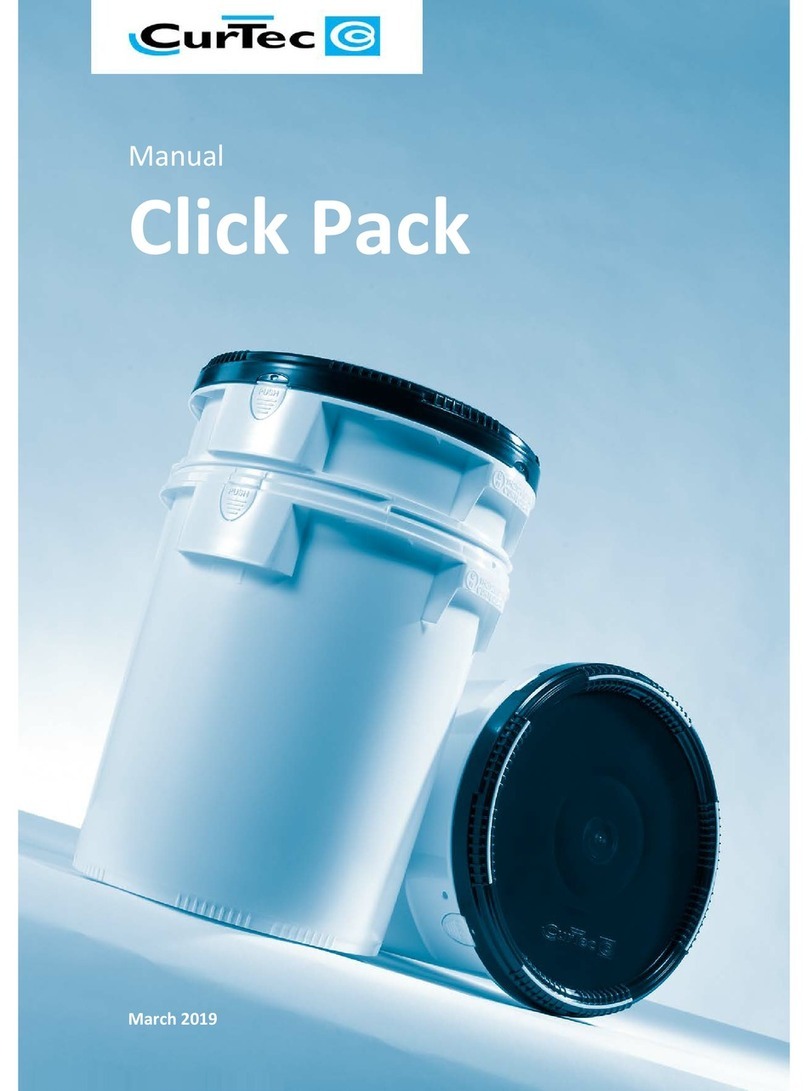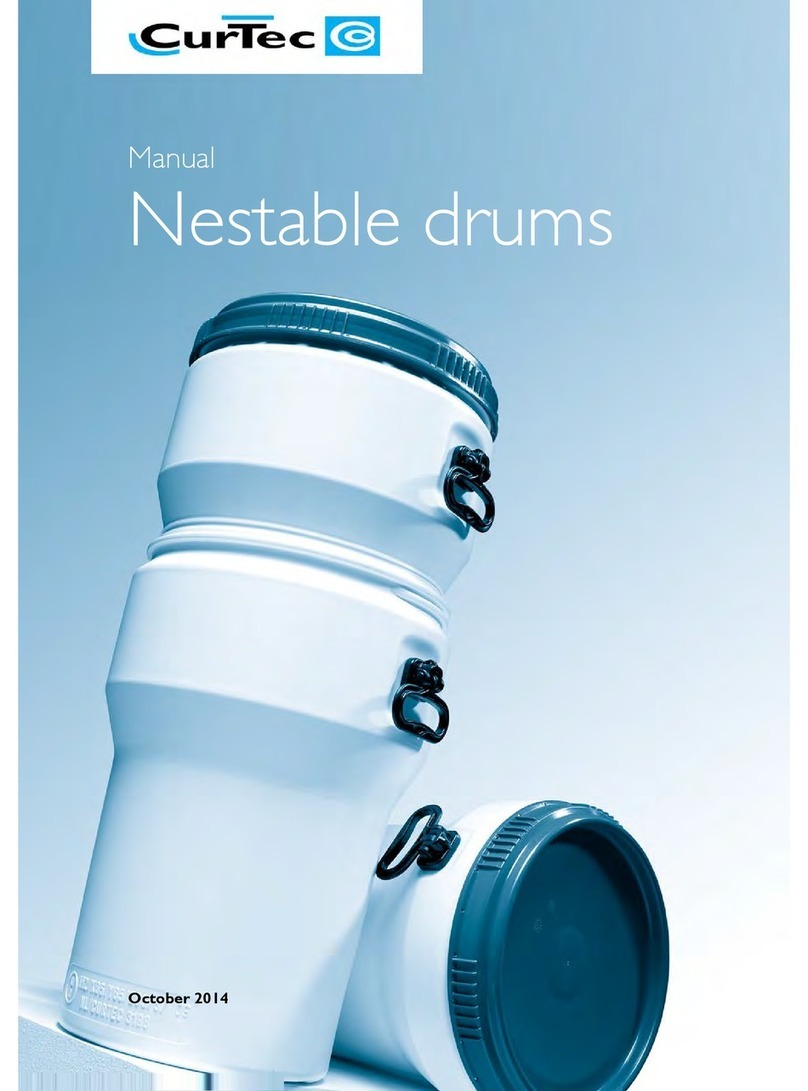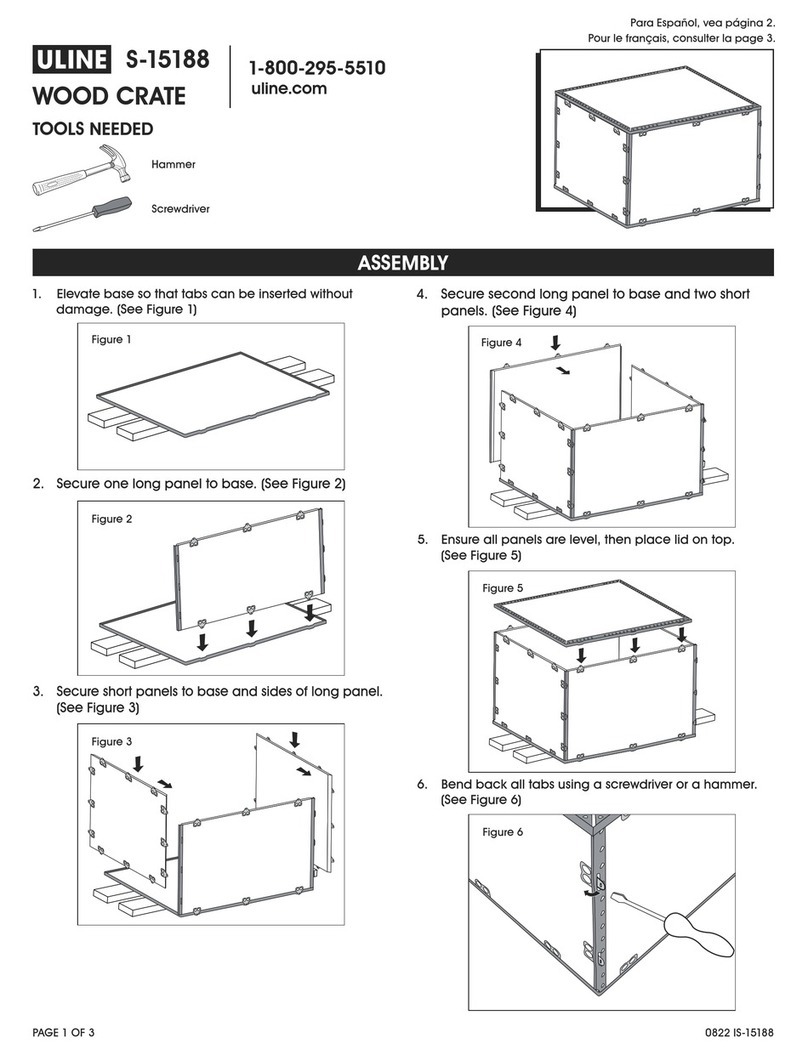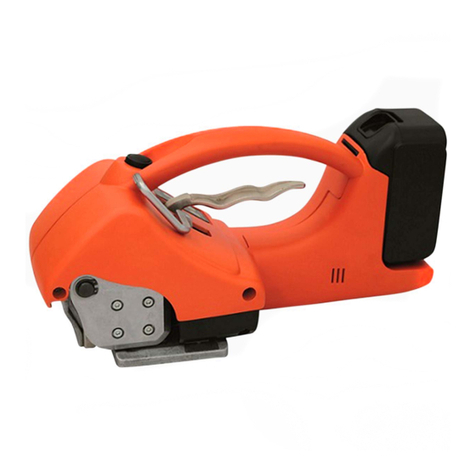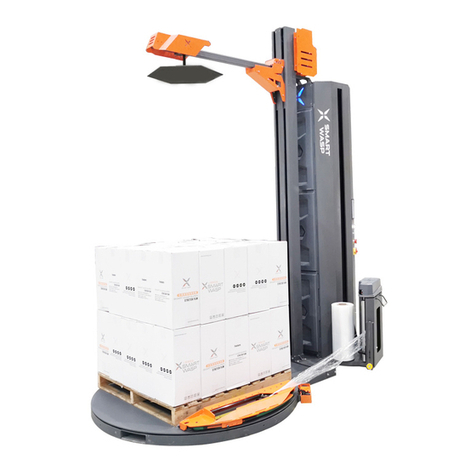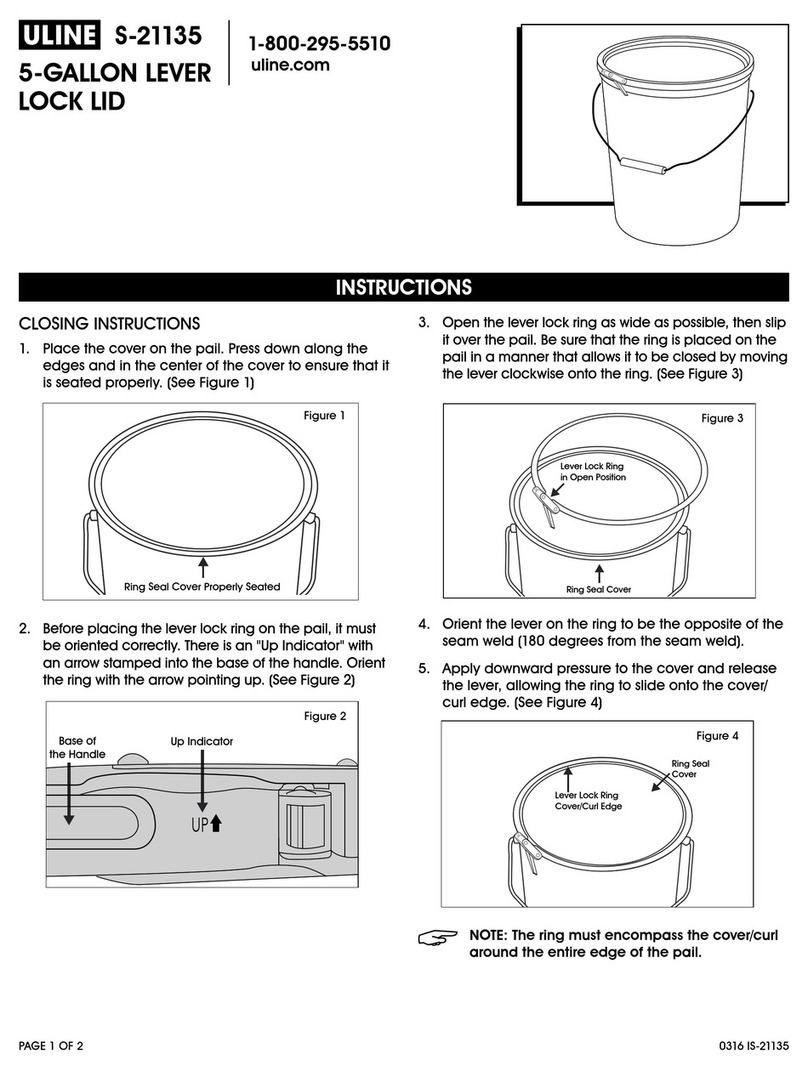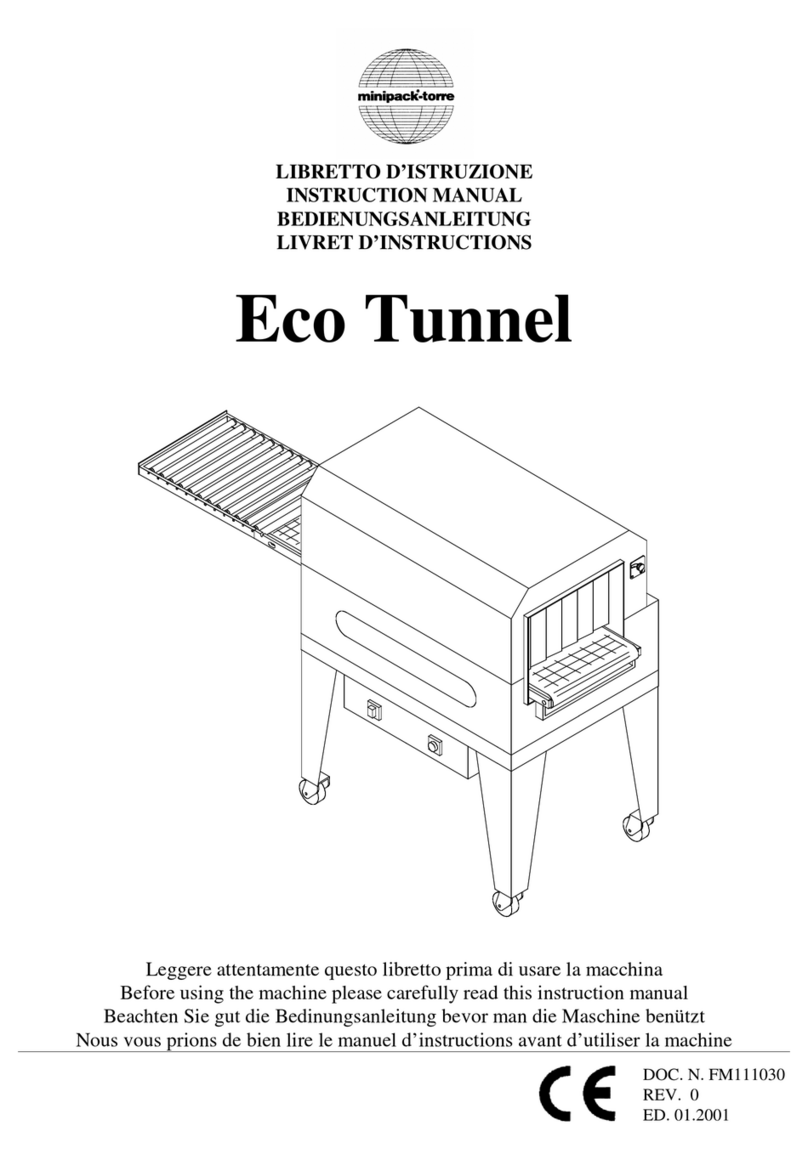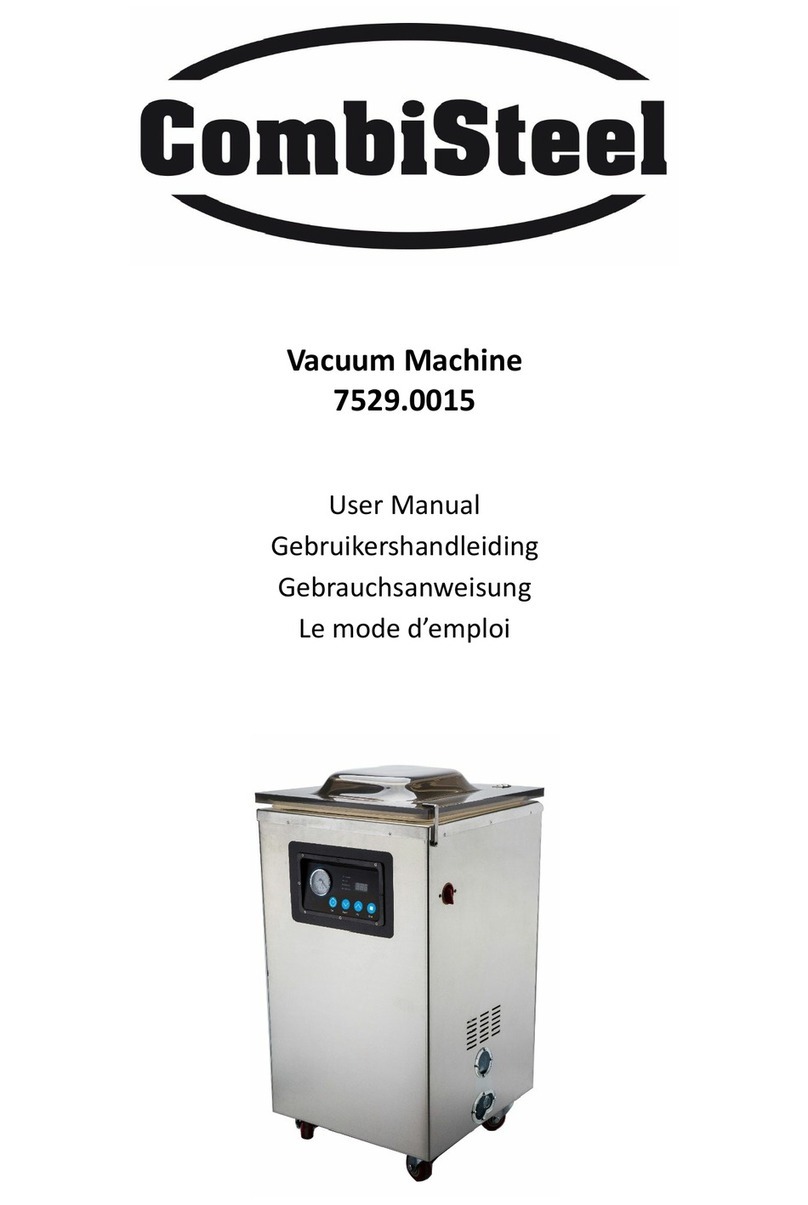
Click Pack manual 1201
04 Static load
When stacking the Click Packs for storage in e.g. a warehouse or
cold store it is important to know what the maximum stacking load
can be on the bottom container. The stacking load depends strongly
on: the container weight, the number of containers to be stacked,
the weight of interlayers and pallets, surrounding temperature, the
duration of the load and the surface beneath the bottom containers.
T (°C) t (months) Product code
0 0,5 329 315 315 315
0 2 277 285 285 285
0 6 241 265 265 265
0 12 221 240 240 240
15 0,5 214 240 240 240
15 2 180 220 220 220
15 6 157 205 205 205
15 12 144 190 190 190
25 0,5 160 200 200 200
25 2 135 185 185 185
25 6 117 165 165 165
25 12 108 150 150 150
35 0,5 120 165 165 165
35 2 101 150 150 150
35 6 88 120 120 120
The table shows for each Click Pack the maximum stacking load (in
kg) at a given surrounding temperature during a certain period of
time placed on a flat and closed surface or pallet.
Attention! The loads mentioned in the table can only serve as indications.
CurTec always advises its customers to perform additional testing.
On the basis of the table the number of containers that may be
stacked can be calculated. It is the stacking load mentioned reduced
by the carrying part of the pallet’s interlayers, divided by the
container weight. This number, with figures behind the comma
smaller than eight, rounded off + 1 = total number of Click Packs.
